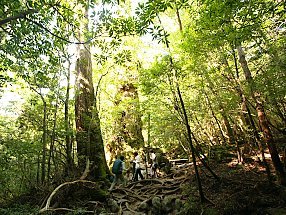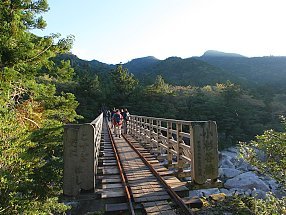Jomonsugi "Kagoshima, Japan"
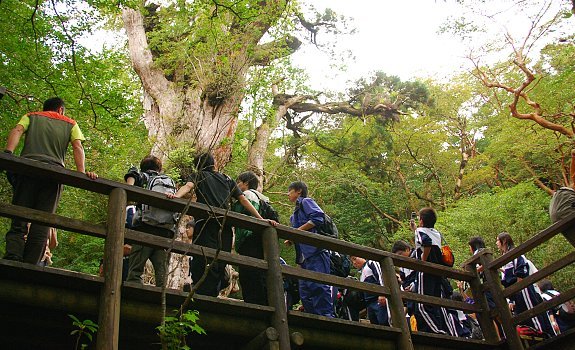
Jomonsugi
The Jomonsugi (Jōmonsugi), the main attraction of Yakushima, is a giant cedar tree which scientists estimate to be 2000 to 7200 years old. Said to be the oldest tree in Japan, it dates to the Jomon Period from which it gets its name. It is not very tall, standing around 25 meters high, yet it has a massive trunk about 5 meters in diameter.
The Jomonsugi was probably first discovered hundreds of years ago by Edo Period loggers, and, like the other ancient cedars of Yakushima, it escaped logging due to its irregular shape. It was rediscovered in the 1960s and has since been protected along with the rest of Yakushima's forests when they became a national park.
Along the trail to the Jomonsugi you can see some of Yakushima's other famous trees including the Meotosugi, a pair of trees that resemble a husband and wife embracing; the Daiosugi (lit. Great King Cedar) one of the largest trees on the island; and Wilson's Stump, the hollowed out remains of a giant cedar felled nearly 300 years ago.
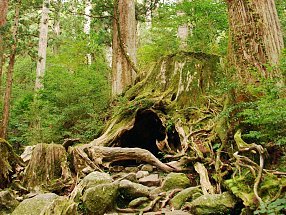
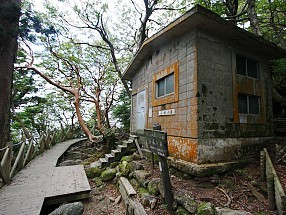
The hike takes about ten hours round trip, and you should leave before dawn in order to finish by sunset. The first part of the hike on the Anbo Trail runs along a seldom used railway that is flat and relatively easy. The second part on the Okabu Trail is a mixture of dirt footpaths, boardwalks and wooden steps, and is often steep.
If you prefer a more leisurely pace you can stay overnight at Takatsuka Hut about 200 meters past the Jomonsugi. The newer and larger Shin Takatsuka hut is about 1 kilometer farther along the Miyanoura Trail. Overnight camping is only permitted at the huts, which are not staffed but have pit toilet facilities.
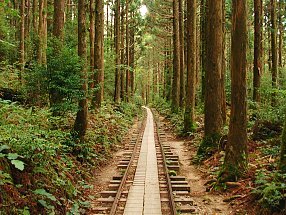 | 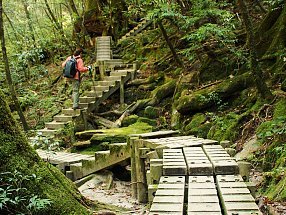 |
As with any hike, bringing the proper gear is essential. Good rain gear and hiking boots are highly recommended. You must bring your own food, toiletries, and plenty of water. Toilets and water are available at the trailhead, the entrance to Okabu Trail and by the Jomonsugi (toilets at Takatsuka Hut and water at the steps before the tree).
Japanese and English speaking guides are available although they are not required as the trails are well marked in English and Japanese. The guides do, however, provide lots of information about the history and ecology of the sights along the way.
